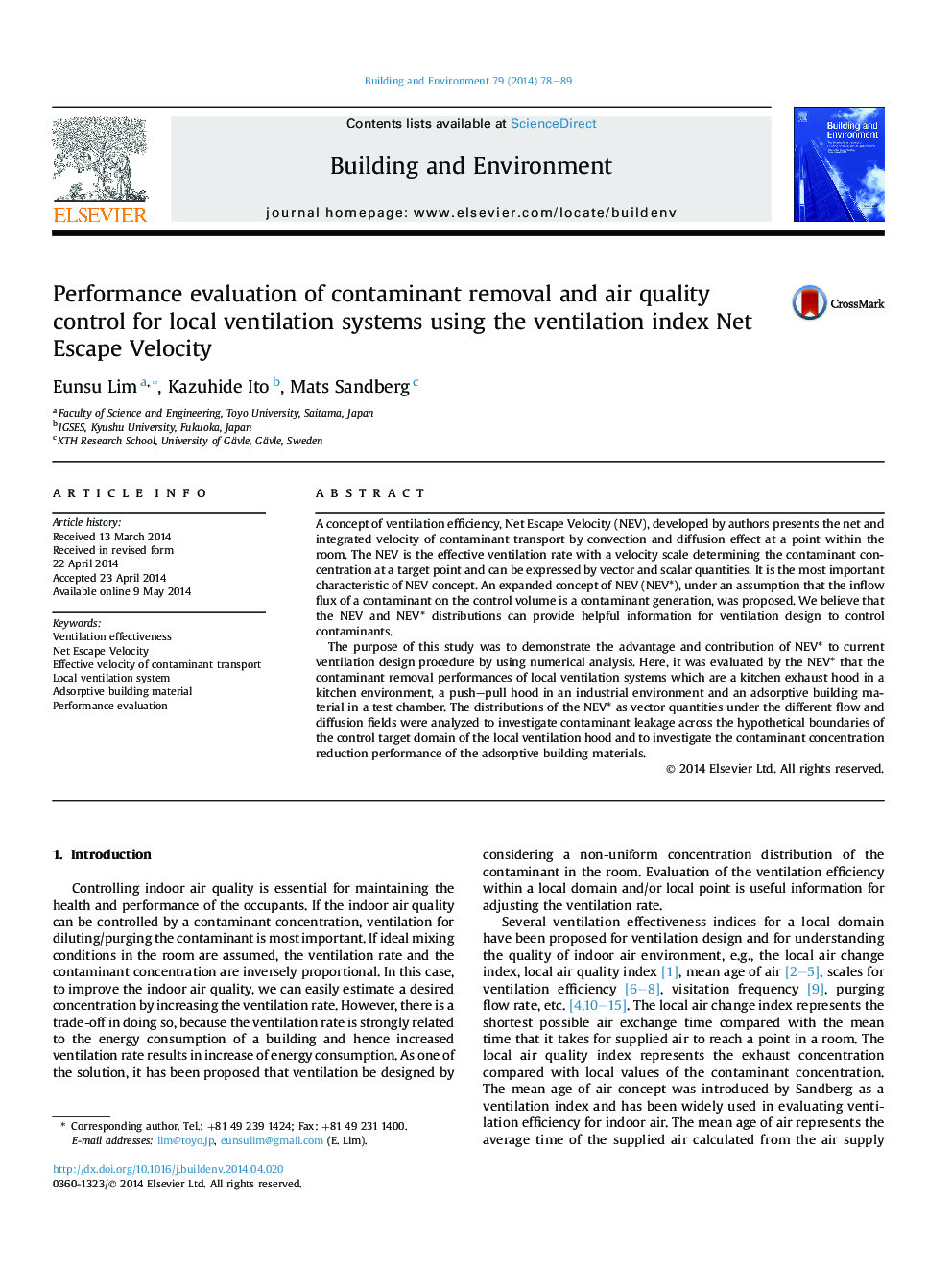| کد مقاله | کد نشریه | سال انتشار | مقاله انگلیسی | نسخه تمام متن |
|---|---|---|---|---|
| 248103 | 502546 | 2014 | 12 صفحه PDF | دانلود رایگان |
• NEV is the effective velocity determining the contaminant concentration at a point.
• NEV integrates the convection and diffusion effects on the contaminant transport.
• NEV* was applied to control IAQ of the room with the local ventilation system.
• The contaminant leakage on a target domain of ventilation was investigated by NEV*.
• We believe that NEV/NEV* will be useful information to the ventilation design.
A concept of ventilation efficiency, Net Escape Velocity (NEV), developed by authors presents the net and integrated velocity of contaminant transport by convection and diffusion effect at a point within the room. The NEV is the effective ventilation rate with a velocity scale determining the contaminant concentration at a target point and can be expressed by vector and scalar quantities. It is the most important characteristic of NEV concept. An expanded concept of NEV (NEV*), under an assumption that the inflow flux of a contaminant on the control volume is a contaminant generation, was proposed. We believe that the NEV and NEV* distributions can provide helpful information for ventilation design to control contaminants.The purpose of this study was to demonstrate the advantage and contribution of NEV* to current ventilation design procedure by using numerical analysis. Here, it was evaluated by the NEV* that the contaminant removal performances of local ventilation systems which are a kitchen exhaust hood in a kitchen environment, a push–pull hood in an industrial environment and an adsorptive building material in a test chamber. The distributions of the NEV* as vector quantities under the different flow and diffusion fields were analyzed to investigate contaminant leakage across the hypothetical boundaries of the control target domain of the local ventilation hood and to investigate the contaminant concentration reduction performance of the adsorptive building materials.
Journal: Building and Environment - Volume 79, September 2014, Pages 78–89
